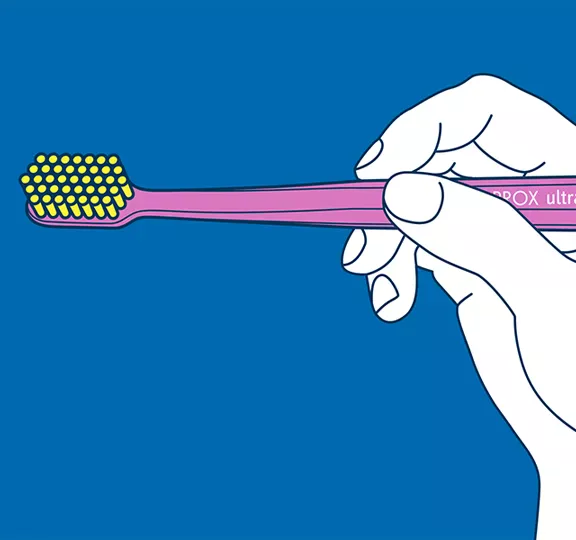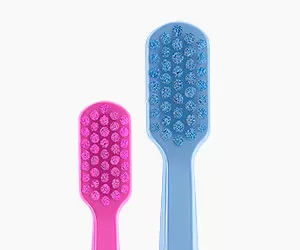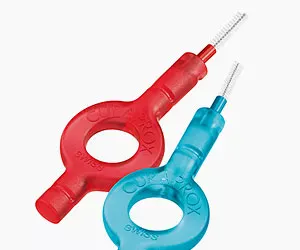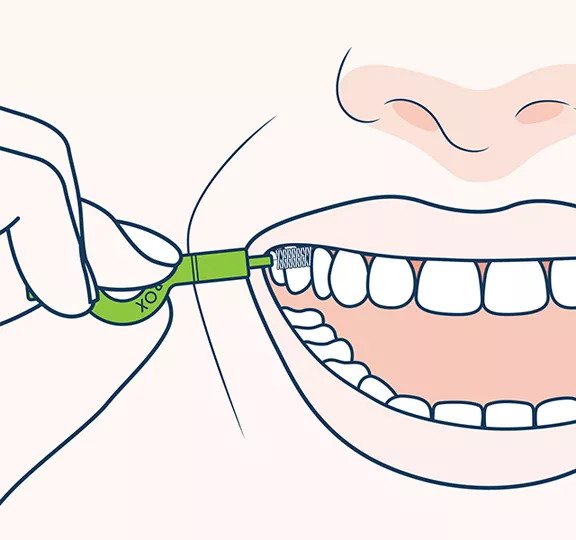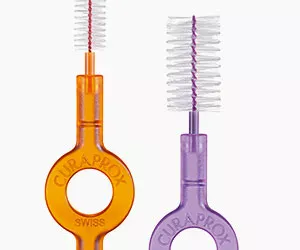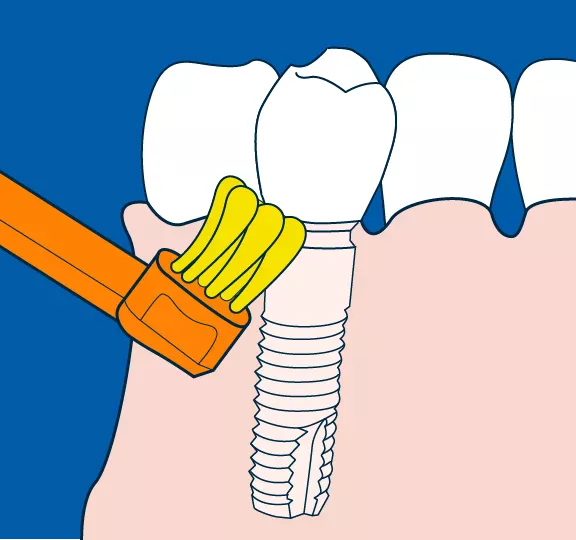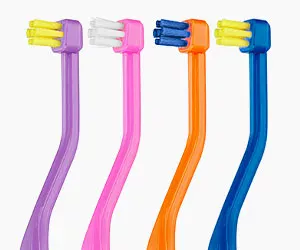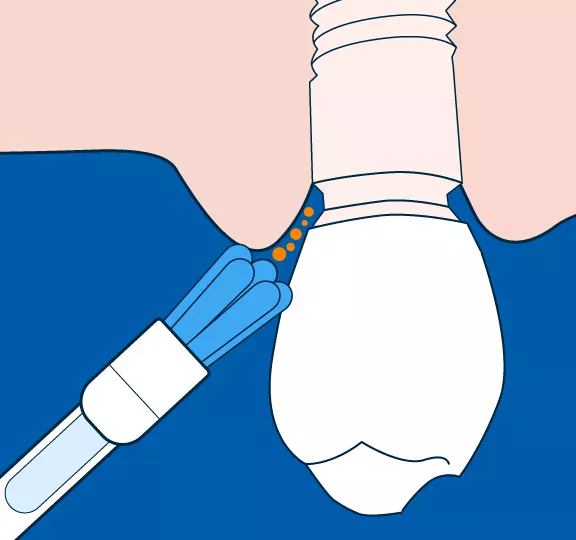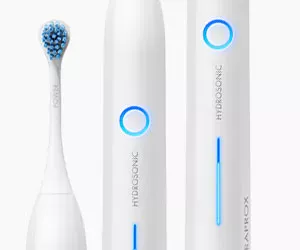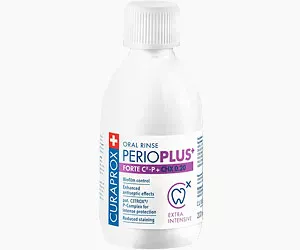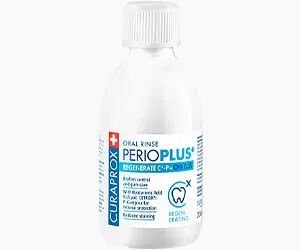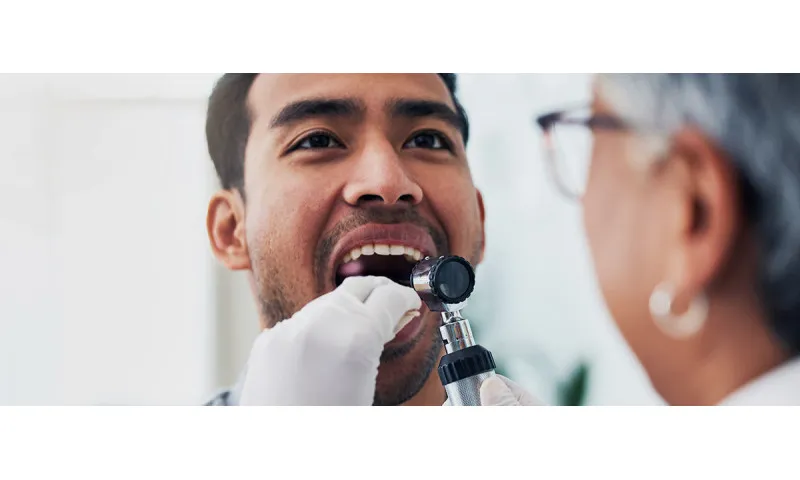Why this guide?
Looking after dental implants
This guide is for you if you want to:
- Feel secure you’re doing everything you can to care for your dental implants… with the least amount of hassle
- Enjoy learning from the experts (we’ve helped millions of people from all over the world with their oral health over almost 50 years)
- Take all the right steps to keep your mouth and dental implants clean… to avoid the inconvenience of further implants
Step one
Oral health & implants
Care for your dental implants – and help prevent further implants – by committing to a great oral health routine…
The foundation of the best oral care is the same for everyone:
- Brush your teeth twice a day
- Use interdental brushes once a day
- Cut down on sugary food and drink
- Visit your dentist and dental hygienist regularly
So in addition to the implant-specific steps below, start by treating your “new tooth” as one of your natural teeth.
If you look after your teeth and gum lines, your whole body - including your arteries, heart and brain - will benefit.
Here are the ultimate ways to brush your teeth and use interdental brushes to help you maintain the best oral health.
Please remember:
A great oral health care routine helps you to prevent further implants.
Step two
Interdental brushes
Use interdental brushes to clean your dental implants…
Failure to brush in the interdental spaces - the spaces between teeth - is a major health risk.
And cleaning with interdental brushes is significantly more effective than flossing, according to a recent meta-analysis.
How to look after your dental implants with interdental brushes…
- After implant treatment, the spaces around your “new tooth” can be much larger than usual.
- The fine, long bristles of the Curaprox CPS implant brush gently clean those spaces.
- As with all Curaprox interdental brushes, a single cleaning movement is all you need…
- Once in and out. Done.
- Do this before or after cleaning your teeth in the evening.
- Ask your dental professional about the right interdental brush for you. It’s important to follow your dentist’s recommendation on which size interdental brushes to use. If a brush is too small for the space, it won’t do the job. If it’s too big, it won’t fit in and you could hurt your gums.
For the whole mouth, we also recommend:
Step three
Dental implant cleaning toothbrush
Clean your dental implants with a specially-designed toothbrush…
The area below your implant is one of those that can be difficult to reach.
If these areas are not properly cleaned, it can lead to serious dental problems.
That’s why the head of the groundbreaking Curaprox CS 708 implant toothbrush is fully flexible.
It can be bent to any angle to make sure your “hard-to-reach” spots are now simple to get to.
And the seven tufts of fine Curen® filaments on the small, compact head remove plaque easily.
How do you clean an implant crown and the surrounding areas with the Curaprox CS 708?
«Apply the CS 708 to one side of the implant.»
«Move the brush up and down – and forwards and backwards – using small, circular motions so the head moves and the filaments can reach underneath the implant.»
«Guide the CS 708 closely along the implant from one side to the other using small, gentle, circular motions.»
We recommend:
Step four
Sonic toothbrushes for implants
Keep your dental implants clean and fresh with a sonic toothbrush…
If you prefer electric toothbrushes, the Curaprox Hydrosonic pro was developed specifically for people with implants, braces or gum problems.
The Hydrosonic pro hits those critical spots around implants thanks to:
- Three different brush heads including the “single” brush head to reach all the surfaces around the implant
- Fine and gentle Curen® filaments (instead of conventional nylon) that wrap around each tooth to clean more effectively
- Seven different cleaning levels – with up to 42,000 wonderfully gentle brush strokes a minute
«A Curaprox Hydrosonic is suitable for anyone who wants to make sure that they clean their teeth really well, even for children and young people. It is also helpful for people with implants or braces. These must be cleaned in all their niches exceptionally well and the best, safest and easiest way is with a sonic toothbrush, particularly with a Curaprox Hydrosonic.»
We recommend:
Further information
Dental implant risks
Can dental implants get infected?
It’s always important to take great care of your teeth and gums – and better oral health leads in turn to better overall health.
But your dental implants need special attention.
It’s crucial for you to carefully clean implant surfaces and the hard-to-reach areas around your implants.
Dental implant infection signs
Failure to do so can result in gum disease such as mucositis – swelling and redness around the gums caused by a build-up of bacteria.
When the plaque is not removed, mucositis can lead to peri-implantitis – with the risk that your implant could become loose.
We recommend:
Ask your dentist
- Keeping your mouth and dental implants clean should now be easy and enjoyable!
- But each implant patient is different.
- Please ask your dental professional or dental hygienist for more information on looking after your implants and your oral health.
 Swiss premium oral care
Swiss premium oral care

